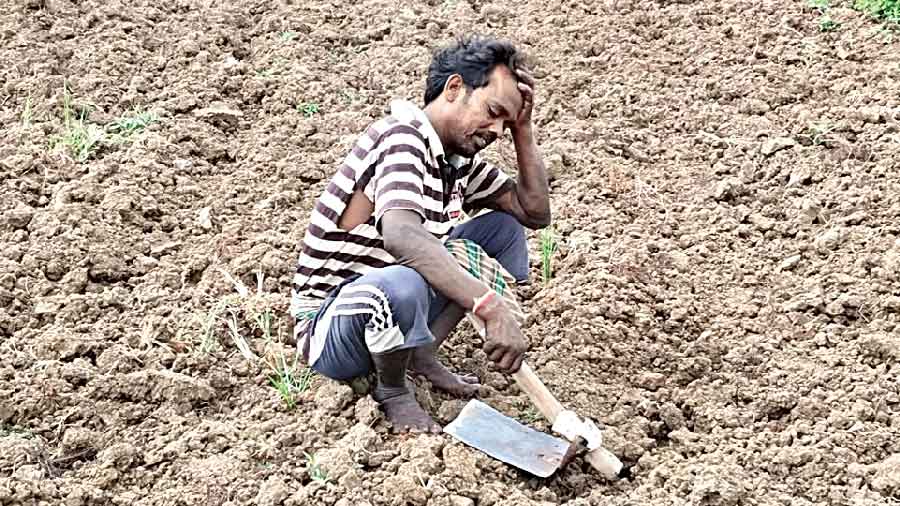Kharif paddy sowing in key Bengal districts failed to get a shot in the arm although the Damodar Valley Corporation (DVC) started releasing water on Friday to alleviate a shortfall caused by insubstantial monsoon.
As rainfall was minimal, existing canals are dry. Dry surfaces soaked up most of the DVC water released so far.
As a result, district officials and farmers fear a serious threat to kharif production, which many feel may not even meet 15 per cent of the targeted 41.81 lakh hectare coverage.
The irrigation network under DVC covers a large portion of south Bengal districts including East Burdwan, Bankura and Hooghly.
Sources said that the sowing of kharif paddy in key rice-producing districts including East Burdwan, Birbhum, Bankura and Hooghly came to a halt earlier this month owing to scanty monsoon. Thereafter, the state government had requested the DVC to release irrigation water, which the DVC did on July 22.
“The DVC told us about shortage in their dams too. As a result they could not release sufficient water. They started releasing water from Friday. But because the soil of the canals is dry, water can’t reach the vast area under the irrigation network. Dry soil is absorbing most of it. So, the situation of the paddy fields remains unchanged,” said a senior agriculture official.
“If there is good rainfall, the soil’s water absorption is saturated and water passes through canals to irrigate fields,” added a farmer. “It is not the case this year.”
The usual deadline for sowing kharif paddy is August 15. But agriculture department officials fear that if the rainfall does not improve, paddy production in Bengal will be in dire straits.
“There is a forecast of rainfall in two or three days in the districts. If the forecast comes true, this crisis will be averted. Otherwise, there is certainly a threat,” said the official.
Agriculture department officials said the DVC water was currently getting used up in two ways — the dry canal bed was absorbing a huge amount of water and farmers who could access the water were taking out more than usual to irrigate their dry land.
In East Burdwan — a district which produces most paddy in Bengal and is known as the rice bowl of the state, only 45,000 hectares of the targeted 3.71 lakh hectares had been covered so far.
“A few pockets in our districts are getting irrigation water but it is really negligible in light of the demand. We need good rainfall in the next two or three days,” said Asish Barui, deputy director of agriculture in East Burdwan.
The situation is reportedly similar in Birbhum, Bankura and Hooghly. Sources said there was a “huge shortage of water” in small dams like Kansabati in Bankura and Tilpara in Birbhum.
Recently, the Bankura administration asked the irrigation department to release water through the irrigation canal without delay. “Irrigation officials told us they will start releasing water from July 28. But it will be too late if the district does not get good rainfall,” said an official.
Farmers said that owing to scarce rainfall, seedbeds in a large area of those south Bengal districts had dried up.
“If we can’t sow paddy within a week, seedlings in the seedbeds will dry up completely and won't be able to be sown any more,” said Nityananda Saha, a farmer from East Burdwan’s Galsi.










